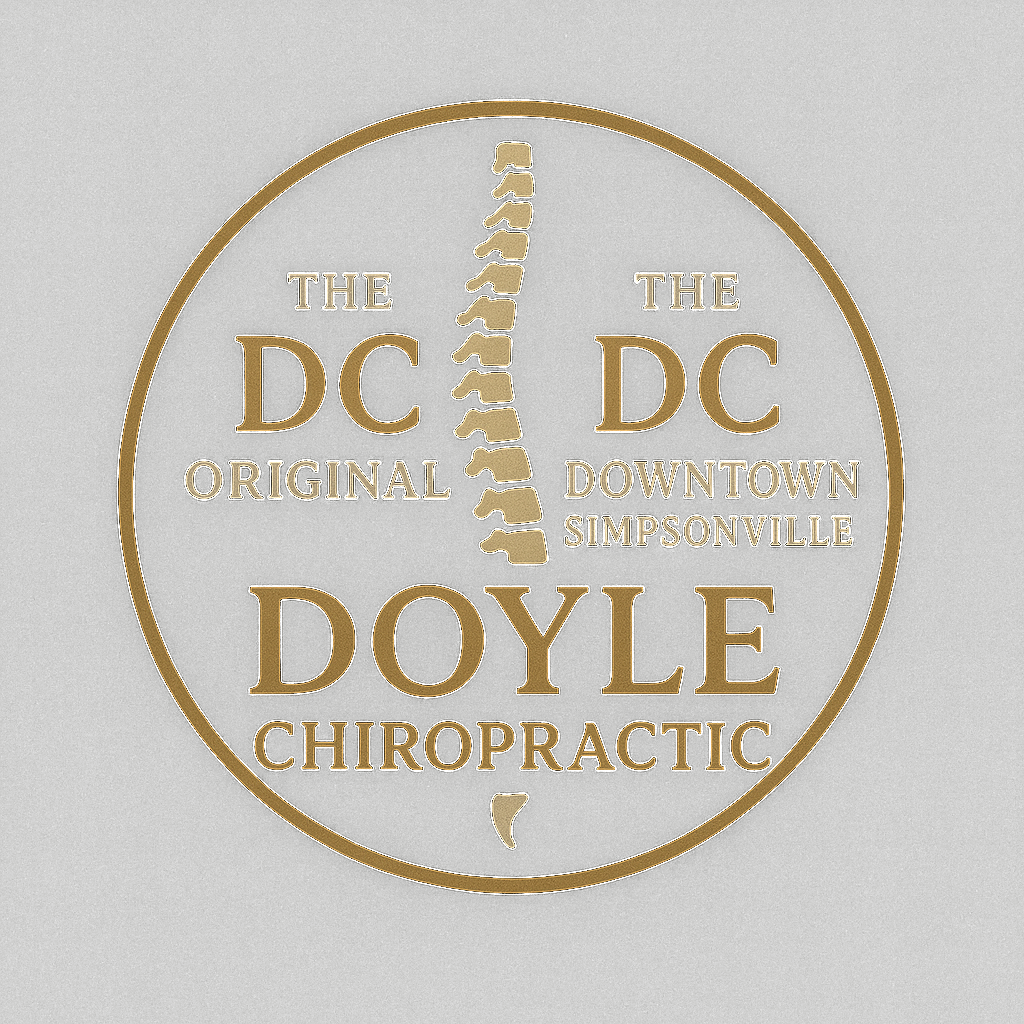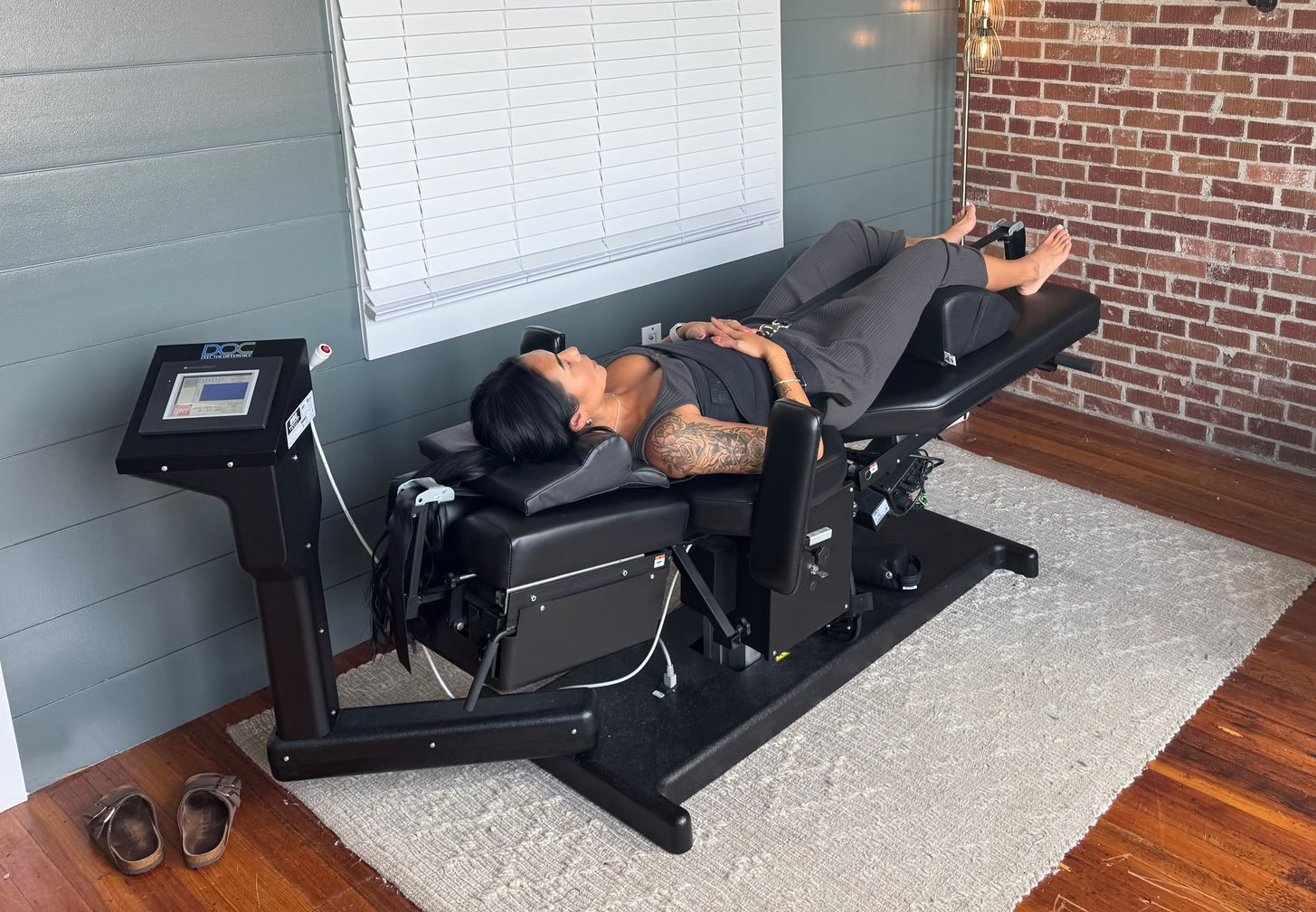Overview of Symptoms
- Neck stiffness, soreness, or sharp localized pain
- Pain that radiates into the shoulders, upper back, or between the shoulder blades
- Numbness, tingling, or weakness in the arms or hands
- Tightness at the base of the skull that may trigger headaches
- Loss of normal neck curvature (“military neck”) or visible forward-head posture
- Burning or aching while sitting at a desk, looking down at devices, or driving
- Popping, grinding, or restricted motion when turning the head
- Fatigue or poor concentration from chronic neck tension
- Neck pain worsened by posture, stress, or repetitive screen use
City skyline
How Chiropractic Can Help
- Restores proper motion to the cervical spine, reducing nerve irritation and muscle tension
- Corrects the structural imbalances caused by tech-neck and forward-head posture
- Improves blood flow and nerve communication between the neck, shoulders, and head
- Reduces compression of cervical discs, helping decrease pain, stiffness, and radiating symptoms
- Relieves tension in muscles connecting the neck, shoulders, and upper back
- Supports long-term improvement by addressing both the mechanical misalignment and the muscular compensation patterns
- Helps restore the normal cervical curve, allowing proper oxygenation, nutrient delivery, and fluid movement
Recommended Therapies for Neck Pain & Tech-Neck
Chiropractic Adjustments
- Precise cervical and thoracic adjustments restore motion and reduce nerve pressure
- Improve spinal alignment and biomechanics
- Relieve chronic tension from poor posture, stress, and screen use
Laser Therapy (Erchonia Class II & Class IV Summus)
- Increases blood flow to tight and inflamed tissues
- Enhances cellular energy and speeds healing
- Decreases irritation of nerves radiating into the shoulders or arms
Shockwave Therapy
- Breaks up scar tissue in the upper back, traps, and cervical musculature
- Improves mobility in chronically tight or overworked muscles
- Increases circulation and helps deactivate deep trigger points
City skyline
Cervical Decompression
- Excellent for people nervous about manual adjustments
- Gently stretches and rehydrates cervical discs without twisting or popping
- Reduces nerve pressure, improves disc spacing, and eases radiating pain
- Particularly helpful for disc herniations, arthritis, degenerative disc disease, or pinched nerves
Posture Correction & Ergonomic Coaching
- Addresses the root cause of tech-neck
- Reduces the daily mechanical stress placed on the neck
- Helps restore and maintain the natural cervical curve
- Improves long-term spinal health and reduces recurrence
City skyline
What to Expect at Your First Visit
(Full spinal X-rays are ALWAYS taken at the first visit.)
- Consultation and detailed health history
- Full spinal X-rays to evaluate alignment, curvature, and disc health
- Posture and cervical curve analysis
- Orthopedic and neurological testing
- Soft-tissue and muscular evaluation
- A relief-based treatment using the modalities most appropriate for your condition
- A clear, individualized plan to begin restoring proper neck function
NERDS ONLY
The Deep Dive Into Why Neck Pain & Tech-Neck Happen
(Long-form, readable, highly educational, and anatomically accurate.)
Neck pain is one of the most misunderstood musculoskeletal problems, and tech-neck has become one of the fastest-growing causes of discomfort in both adults and teens. The neck was never designed to support the weight of the head in a forward-leaning position for hours each day, yet modern life demands exactly that. Every inch the head moves forward increases the effective weight the cervical spine must support. A normal 10- to 12-pound head can place 50 to 60 pounds of force on the neck when pushed forward by several inches. This excess strain tightens the suboccipital muscles, overloads the cervical joints, collapses the natural curve, and irritates the nerves that travel into the shoulders, arms, and hands.
City skyline
When the cervical spine loses its normal lordotic curvature, the discs begin to compress unevenly. The front of the discs are overloaded while the back becomes stretched and weakened. This mechanical imbalance slows blood flow and can interfere with cerebrospinal fluid (CSF) movement. CSF circulation is essential for delivering nutrients and oxygen to the brain while removing metabolic waste. Reduced CSF movement contributes to pressure, fatigue, headaches, dizziness, and the “heavy head” feeling many people describe.
The muscles that stabilize the head and neck must compensate heavily when posture collapses. The traps, levator scapulae, suboccipitals, and deep cervical flexors all become strained, creating a cycle of tightness, inflammation, and dysfunction. Over time, these muscles develop trigger points that refer pain into the head, behind the eyes, into the jaw, and down into the shoulders and upper back.
The nerves exiting the cervical spine can also become irritated or compressed. These nerves control sensation and strength in the shoulders, arms, and hands. When the joints of the neck are misaligned, the surrounding muscles tighten protectively, further compressing the nerve pathways. This can lead to numbness, tingling, radiating pain, or weakness — symptoms often mistaken for carpal tunnel or shoulder disorders.
This entire pattern becomes even more complex when the thoracic spine and shoulders are involved. Forward-rolled shoulders shorten the chest muscles and weaken the stabilizers between T1 and T5 — the area directly connected to the muscles that help anchor the base of the neck. When the upper back collapses, the neck is forced into a forward and downward angle, amplifying tension and mechanical stress throughout the entire cervical system.
The therapies we use at Doyle Chiropractic address all three major components of neck pain:
mechanical alignment, nerve function, and soft-tissue balance. Cervical adjustments restore proper joint mechanics. Laser therapy improves cellular healing and reduces inflammation. Shockwave therapy breaks down scar tissue and chronic muscular adhesions. Cervical decompression gently reduces disc pressure without twisting or popping — a perfect option for patients who are nervous about manual adjustments or whose conditions respond best to decompression.
Chiropractic care is effective because it doesn’t just chase symptoms — it restores the normal biomechanics of the spine, helps the muscles work in harmony again, and ensures proper movement of blood, oxygen, and CSF. As posture improves and nerve irritation decreases, patients frequently report better mobility, fewer headaches, improved focus, deeper sleep, and a sense of “lightness” through the neck and shoulders.
If you’re still reading, you’re one of our brilliant “nerds,” and we truly appreciate that. The more you understand your spine, the better your results. When neck pain or tech-neck becomes part of your daily life, correcting the underlying problem rather than masking it can make all the difference — and that’s exactly what we’re here to help you do.
Call to Action
Ready for relief? Call (864) 881-4221 or visit /book to schedule online. New patients: start at The DC Original.
Why does my neck hurt?
Common reasons include posture strain, muscle tension, joint restriction, and prior injuries.
Do you take X-rays?
Yes. X-rays are required for most initial evaluations and are performed at The DC Original.
Disclaimer: Information is educational and does not replace an in-person evaluation.






